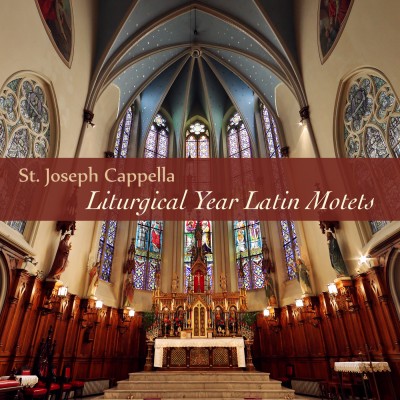Editor's note: We are grateful to Teresa Chisholm, one of the creators of Liturgical Year Latin Motets, for this guest contribution. Lisa
Music and the Liturgical Year
There are many ways to celebrate the liturgical year with our children, helping them to enter into the mysteries of our faith and to develop an ever-deepening relationship with the Lord Jesus Christ. Along with receiving the sacraments and participating in the life of the parish, at home we can pray with our children, learn about the saint of the day and make related crafts, and mark feast days with special prayers and foods. Another great way to experience the liturgical year is through music.
Music can have a very powerful effect on the soul through its sound and lyrics. Pope Benedict XVI explained in his General Audience of August 31, 2011 that “some artistic expressions are real highways to God, the supreme Beauty; indeed, they help us to grow in our relationship with him, in prayer. These are works that were born from faith and express faith. . . . [W]hen we listen to a piece of sacred music that plucks at our heartstrings, our mind, as it were, expands and turns naturally to God.”
Most, if not all of us, play Christmas music in December, but what about the rest of the year? There is a vast treasury of Catholic sacred music that we can introduce to our kids, including Gregorian chant, polyphony, and hymns. But how can a busy mom who may have no musical background accomplish this? All you need to do is play the music and experience the presence of God through beauty together with your family.
With a little preparation, you can make a playlist for each season of the liturgical year—Advent, Christmas, Ordinary Time, Lent, and Easter. You can start with a few pieces of music for each season and then add to it over time. Your children may even enjoy researching the music and deciding in which season it fits best based on the words and the sound.
Of course, you can listen to your playlists at the times best for your family—during meals or play, in the car, or right before bed. Perhaps it would be helpful to get into a routine of playing it at the same time each day. The liturgical year has such a beautiful rhythm. When the Easter season comes around each year, you and your children can delight in listening to the playlist from the previous year and adding to it.
You can find quality sacred music in most Catholic bookstores and online; it seems that an increasing number of excellent CDs are being produced by religious orders, professional choirs, and parish choirs. There are also many free sources of sacred music. For example, you can download the entire collection of Gregorian Chant Masses at Corpus Christi Watershed, or search for “Mozart Mass” on YouTube and listen away.
Another resource to get you started on your liturgical year playlists is Liturgical Year Latin Motets by the St. Joseph Cappella, a parish choir my husband and I sing with. We recorded this summer inside historic St. Joseph Church, Mother of Divine Mercy Parish in Detroit, including pieces for every season of the year and a polyphonic Mass. You can listen to clips of each track and order here or download on iTunes.
The attractive 16-page CD booklet contains photos, text and translations, and notes about each piece and its place in the liturgical year. For example, two of the motets for the Easter season include Palestrina’s Sicut cervus, with text from the Easter Vigil, and Aichinger’s Factus est repente, with text from the story of Pentecost in the Book of Acts. One of my favorite tracks is Ego Sum Pastor Bonus; a former director, Thomas M. Kuras, composed this piece for the St. Joseph Cappella for Good Shepherd Sunday in the Easter season. The text is from the Gospel of John: “I Am the Good Shepherd; I know My sheep and My sheep know Me . . . and for these sheep I will give My Life.”
By weaving sacred music into our everyday lives throughout the liturgical year, its beauty can touch the hearts of our children and gently lead them to the Good Shepherd. If we simply select and play the music, by the grace of God our children will come to know Him in a more intimate way.
Teresa Chisholm is a wife and homeschooling mother of three active boys, sacred music enthusiast, and hobbyist photographer living in the Detroit metropolitan area.
Images and Text Copyright 2015 Teresa Chisholm
About the Author

Guest
We welcome guest contributors who graciously volunteer their writing for our readers. Please support our guest writers by visiting their sites, purchasing their work, and leaving comments to thank them for sharing their gifts here on CatholicMom.com. To inquire about serving as a guest contributor, contact editor@CatholicMom.com.




.png?width=1806&height=731&name=CatholicMom_hcfm_logo1_pos_871c_2728c%20(002).png)
Comments